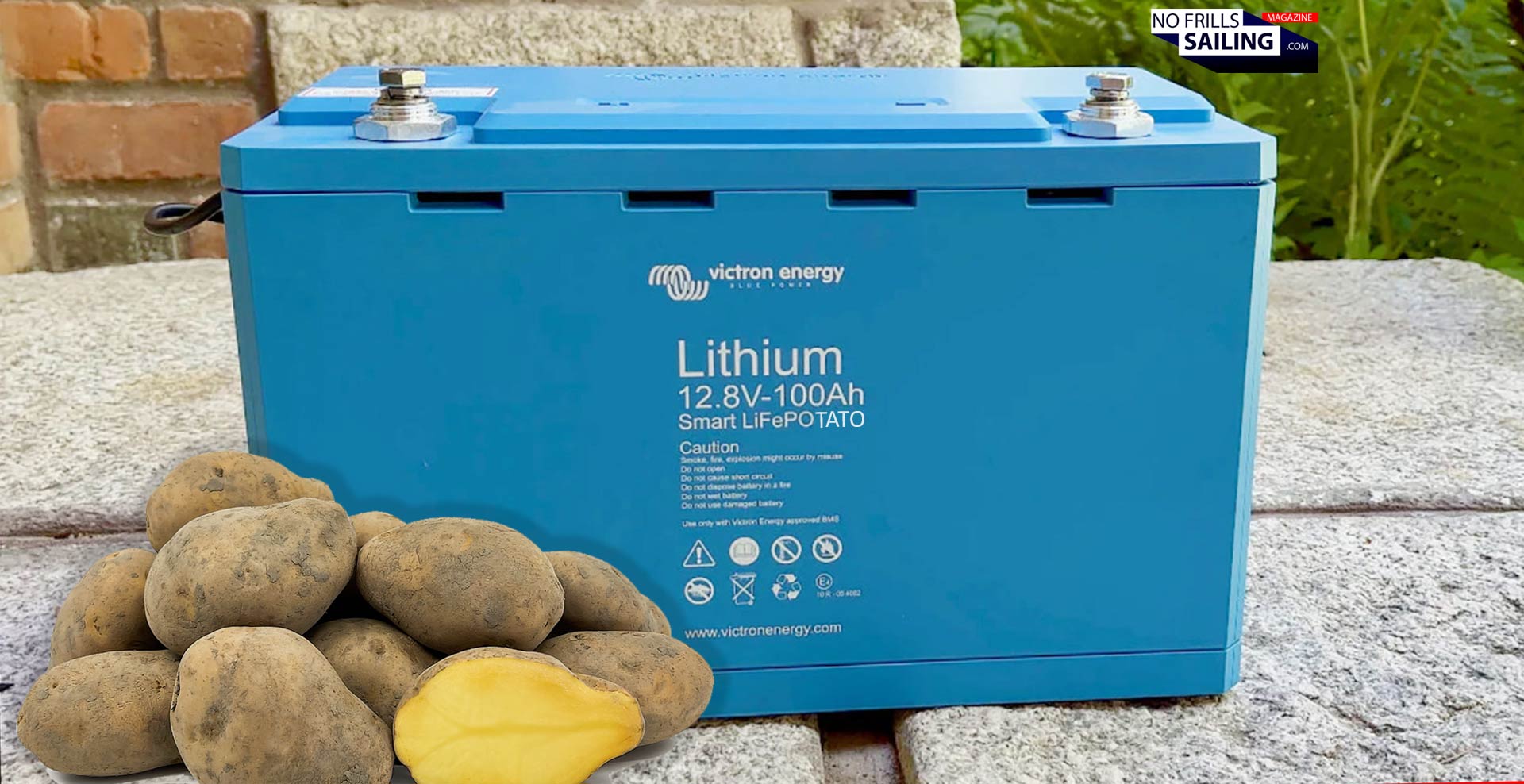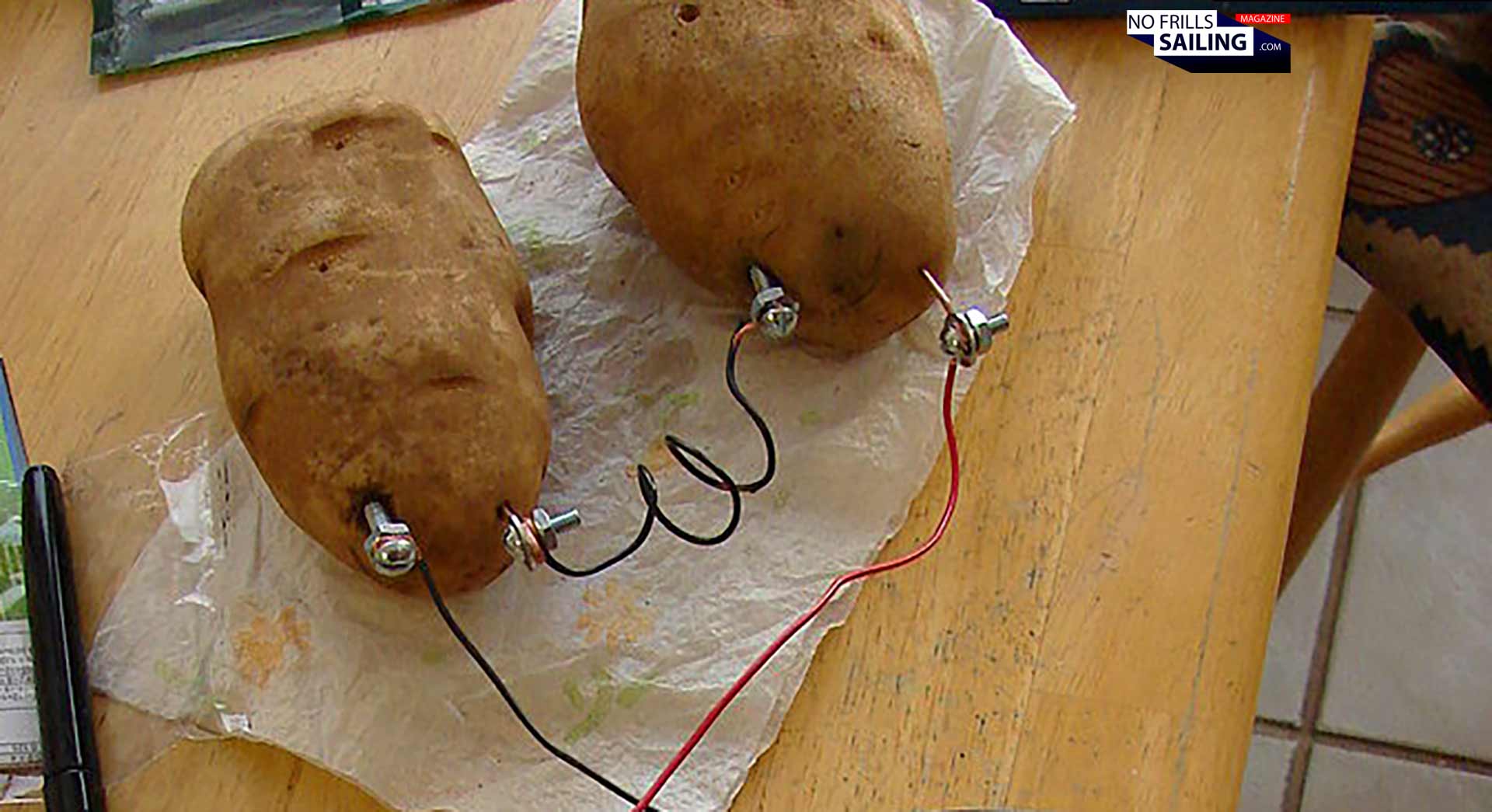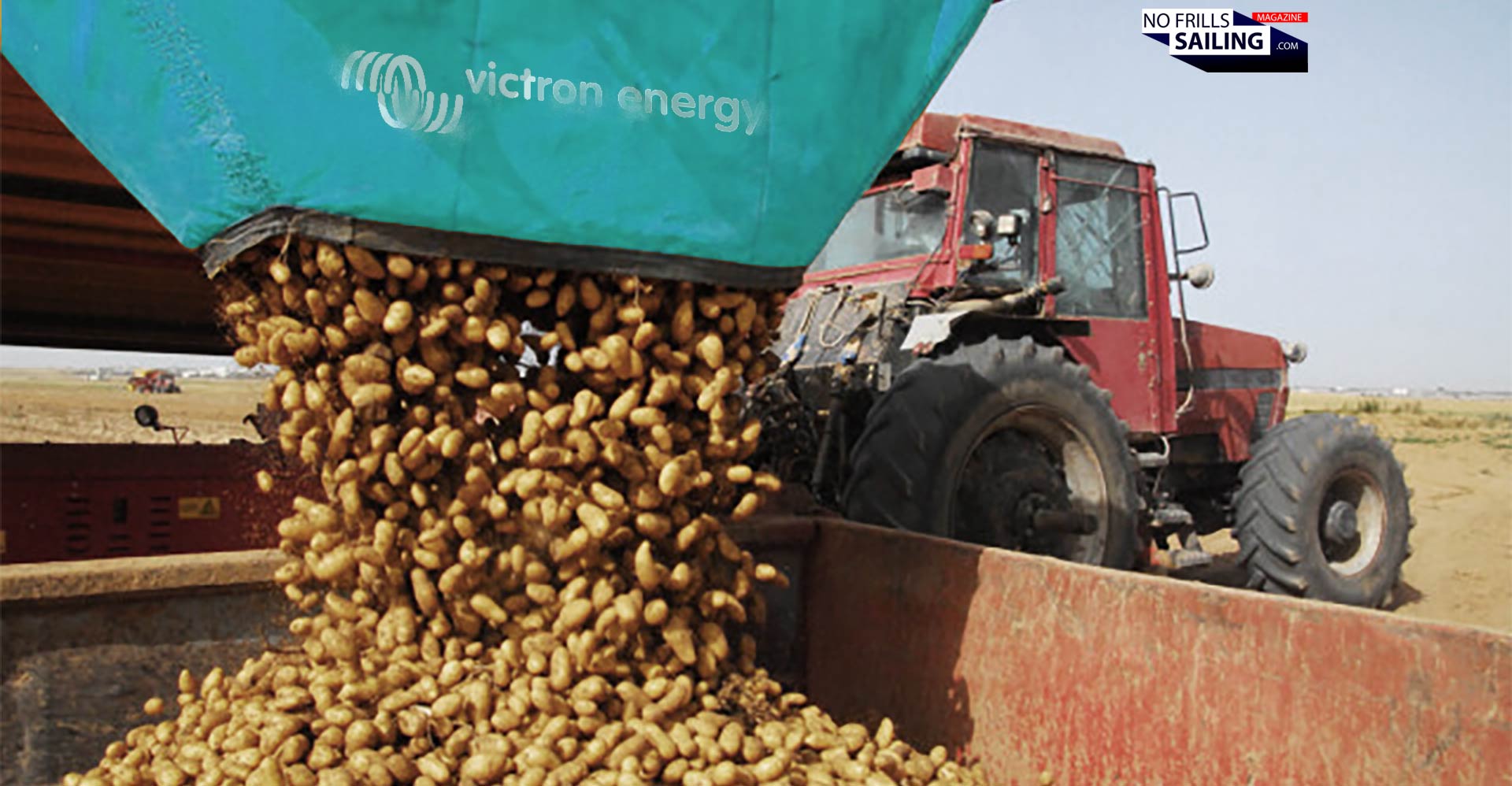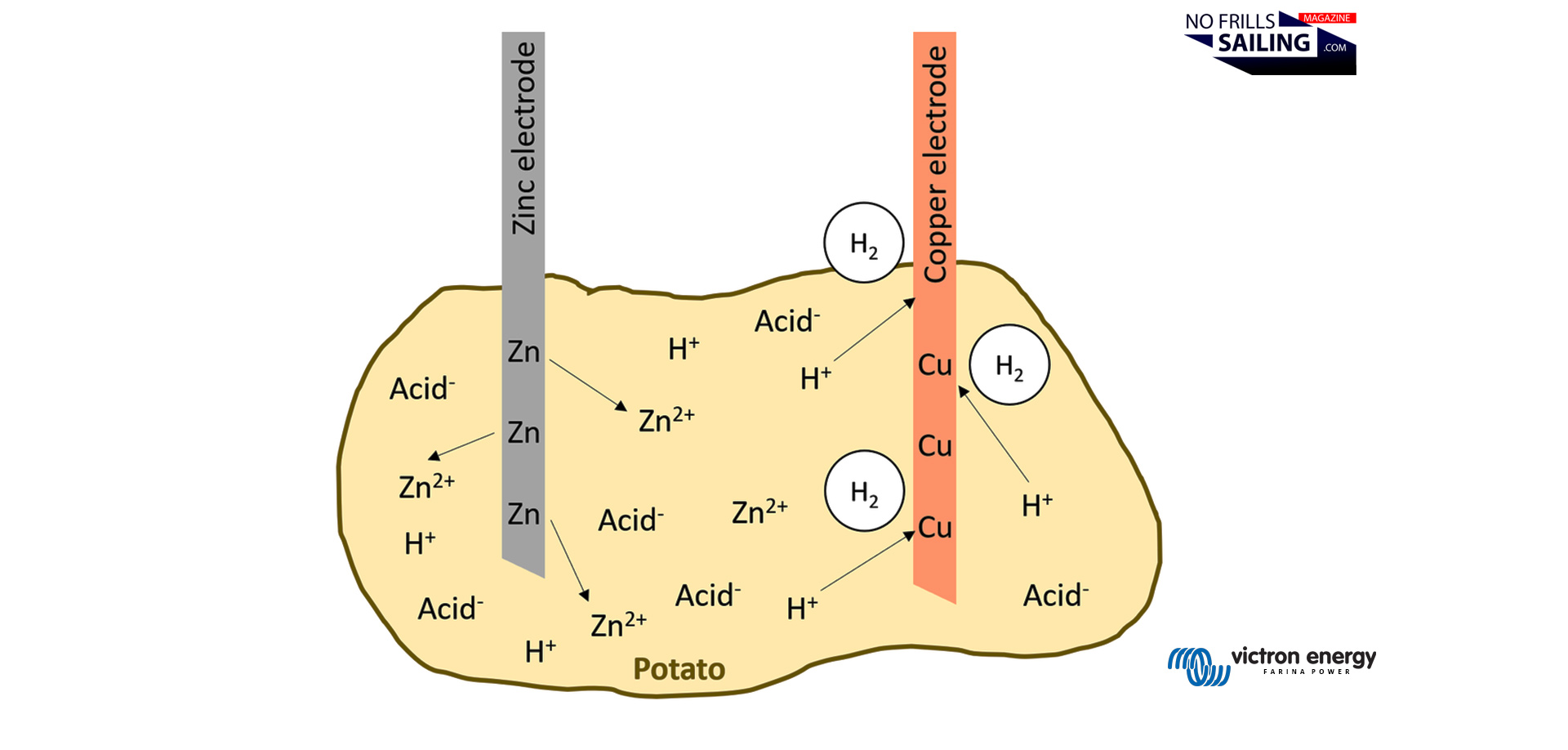We undeniably live in exciting times. One technological revolution after the other is re-defining how we live, how we work, how we communicate and certainly, how we sail. Electric energy and its storage is a primary topic for any sailor: Getting down the demand for the juicy 12 Volts current is one thing (for example with energy saving LED-lights), introducing sustainable and alternative „green“ and „blue“ ways of energy production is another. One of those „next big things“ has now been launched: Onboard energy storage redefined! So, let´s talk latest technology batteries.

Market leader Victron Energy has just released their newest battery type. This blue wonder-box is said to conquer all the battery banks of sailing yachts, be it small or big. As Victron puts it: „Never has battery management been so tasty!“ I am of course talking about a new member to the LiFePO battery family. Lithion-Ion batteries are top notch, but they come with a price: Awful human labor conditions in Lithium producing countries, the political hotness connected to rare earths and at home? Still some teething troubles related to overheating. Well, cross those off your list of concerns, here´s a new one …!
From a fun kid´s experiment to serious marine use
I am talking, of course, about the potato. As Victron puts it: The „PO“ in „LiFePO“ has always stood for „Potato“. Tapping into the energetic potentials of vegetable-power is a no-brainer. Every kid witnesses the amazing capabilities of the tasty, starch-rich agricultural produce during fifth grade physics in school. The amazing power coming out of just two raw, unprocessed potatoes is enough to make a bulb light up. Just imagine the concentrated power of a whole sack …?!

This famous pupil´s experiment surely made a pretty decent impression on some of today´s most capable scientists. At Victron, near the Dutch headquarter, they had set up a scientific research laboratory almost a decade ago already to dive deeper into the sheer power of the tasty tuber: „We´ve seen that scarcity and political implications made sourcing of the precious materials needed for standard Lithium-Ion-batteries increasingly uncertain. Potatoes however are abundant, more so since Soy-based food almost took over in many countries.“
Utilizing the vast agricultural potential
Apart from the Netherlands, Belgium and Germany, where the potato is still considred basic food, Victron cashes in on a worldwide potato overproduction. There is a huge mountain of more than190 million metric tons of potatoes grown and harvested anually worldwide. A Victron 100 Ampere hours LiFePOtato battery needs to be stuffed with the essence of just 150 kilograms of Yukon Gold or Russet. Albeit amounting to double the anual potato-consumtion of an average Dutchman, a man switching to rice or pasta as side dish is far better, than the suffering of all those kids in the mines.

Victron has already set up cooperations with potato growers all over the world. Striving to make sure that a constant flow of veggies is guaranteed, it is also imperative to make oneself independant from the growing seasons. With potatoes coming in from Europe, Asia and America, the battery production all year round is secured. In this, abiding to local laws and having their raw potatoes grown under license of different eco-labels will further incease the attractiveness of this new product. Cheap batteries made in the Far East simply cannot reach these high quality levels.
How do these new LiFePOtato Batteries work? And are these safe?
So, how does Victron get the power of the potato stored inside their new batteries? As the intimate details of this new product remain undisclosed of course, the basic workings of an electric potato are, as mentioned before, fifth grade-level: The acidic juice of the potato triggers the flow of electric energy between two metals. Simple. The scientists of Victron Energy´s R&D department extracted, optimized and concentrated that potato-power to fit in a standard sized yacht battery.

As their new LiFePOtato-batteries basically accept any chips from any potato, best energetic output is achieved with extra starchy sorts like Augusta or Belmonda. „Any potato you´d be using to make French Fries!“, as one Victron official told me behind closed doors. It´s a fact of physics that every transformation of energy always results in at least a little excess heat, ventilation and cooling is key for the batteries. But there´s no need for overly complicated installations. „And in case it gets too hot, worst thing that can happen is some tasty, crisky fried potato chips in your boat´s engine room“, the guy tells me. „When it smells too good – it´s bad down there underneath the floor boards …“
When do you upgrade your yacht to latest LiFePOtato-power?
After some rather secret tests with sailors, this new product is made available to commercial as well as leisure oriented use right today, April the first 2025. It clearly marks an important date which will long be remembered. Production is ramping up, you may check your local chandlery or favorite online vendor for the new Victron LiFePOtato batteries. Upgrading your yacht´s battery bank is a no-brainer: Just take out the old batteries and dispose of properly and connect the new ones. Plug & play.

It´s really as easy as ABC, as Victron promised. And the best about this? If you feel your batteries are loosing too much juice, a wise sailor will always have a sack or two ready for a quick refill. „No peeling needed“, as Victron confirms. Now there´s no excuse to further delay the battery upgrade of your sailboat. As Victron puts it: „It will certainly take half a decade until we have the next big thing series production ready: Victron RatRace-batteries. But there are still many obstacles ahead, especially in terms of animal protection.“ So, why waiting? Get your LiFePOtato-setup now!
You may also check out these related articles – seriously:
Determining the electric energy demand of my (old) sailboat
Currents in a bucket: About the dangers of galvanic corrosion for sailing yachts
Garmin electronic equipment for my new Omega 42
And finally: More #aprilfools articles here 🙂
